In 1865, the US Navy was the second-largest in the world, and a close rival to Great Britain's. It had chased Confederate commerce raiders and enforced the blockade that had strangled the South. It had fought the world's first battle between ironclads, and perfected the art of coastal attack. But in the aftermath of the war, it all came crashing down. Raiders had driven American merchant ships to foreign flags, and the government prevented them from returning postwar. Railroads opened the west, and the US turned its attention from the sea to the inland frontier. Robbed of its public support, economy was the order of the day and the Navy shrank drastically, falling from 671 ships in 1865 to only 238 in 1867. Even those that were retained were in poor repair, and many sailors on foreign stations (greatly reduced thanks to the absence of merchantmen in need of protection) wrote about their embarrassment next to freshly-painted foreign warships.
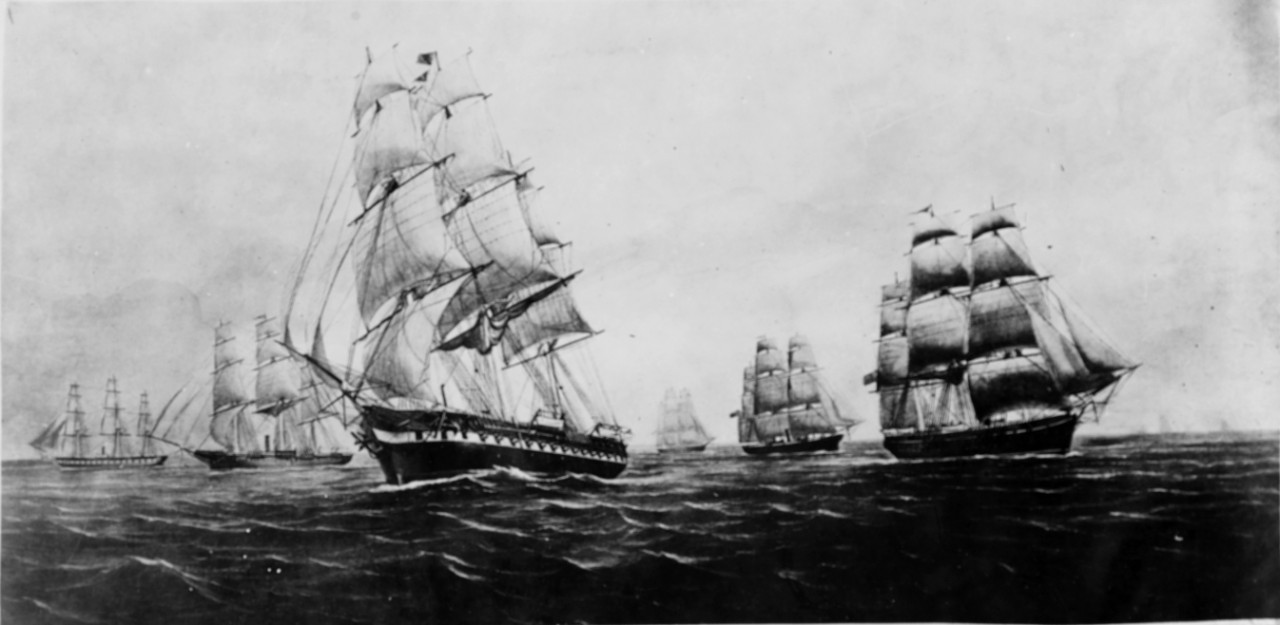
The US European Squadron, 1872
Making matters worse, much of the Navy's leadership was ineffective or downright reactionary. David Porter, a Civil War naval hero, was promoted to Admiral and effectively dominated a series of weak Secretaries of the Navy, including one who was surprised to find that ships were hollow on his first visit. He emphasized sail, threatening to take the cost of any unnecessary coal used out of the Captain's pocket. Occasional war scares with various countries, such as the Virginius Affair of 1873, emphasized the Navy's weakness, but any appetite for new ships died with the crisis that spawned it.
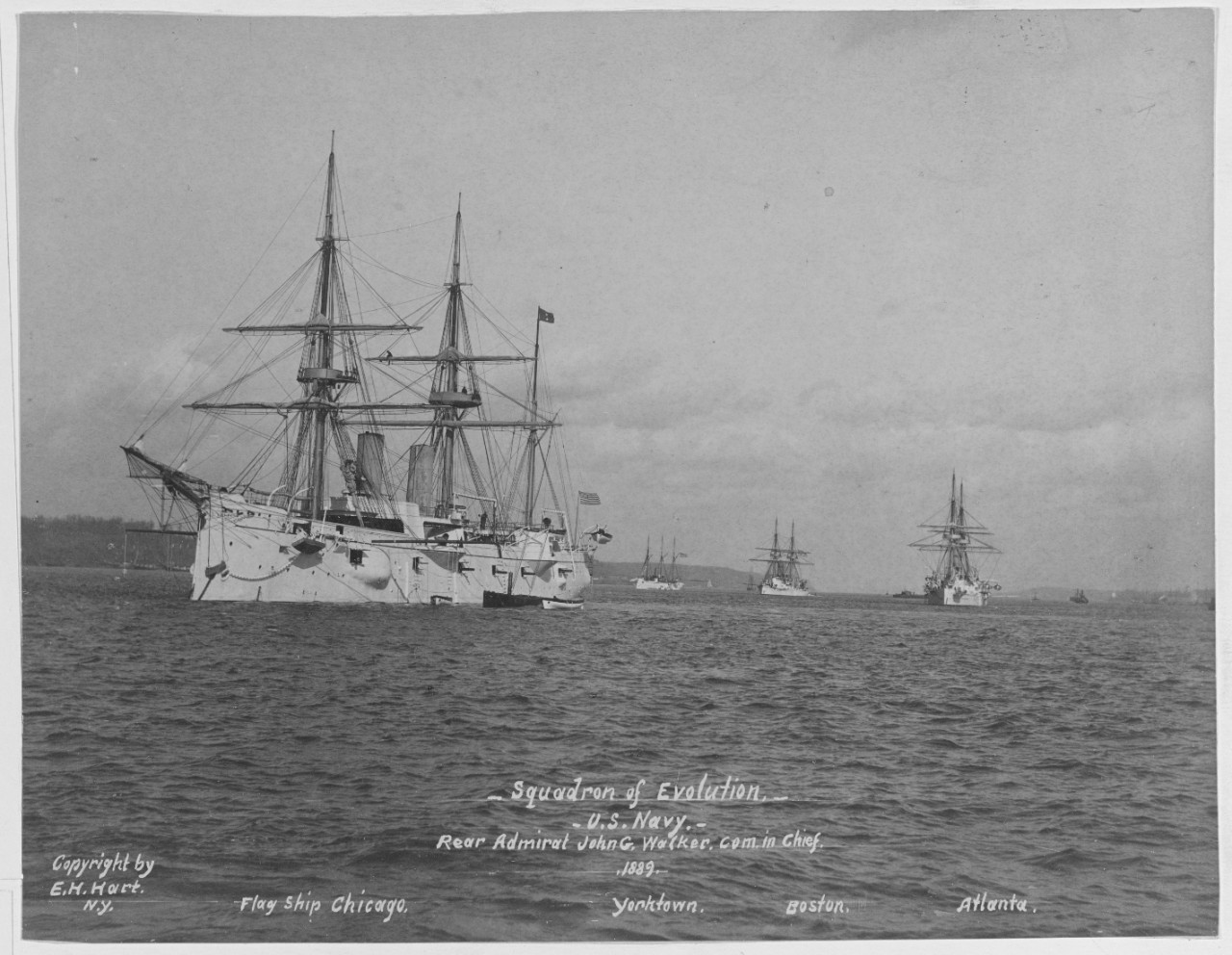
Atlanta, Boston and Chicago
Things began to change in the early 1880s. The US Naval Institute, founded in 1873, had become a strong advocate for building a modern fleet. And William Hunt, appointed Secretary of the Navy by James A Garfield, convened a board that requested appropriations for modern ships, with steel hulls and reasonable attention to steam power. Congress turned them down at first, but in 1883 approved three small protected cruisers - Atlanta, Boston and Chicago and the dispatch boat Dolphin, known as the ABCD ships. These vessels still had sailing rigs, but it wouldn't be long before they too were discarded. In 1885, the first American battleships, Texas and Maine were ordered, along with another pair of cruisers. Unfortunately, construction on these ships did not proceed smoothly, as the Democrats gained power and quickly used it to attack the Republican-sponsored naval programs.1
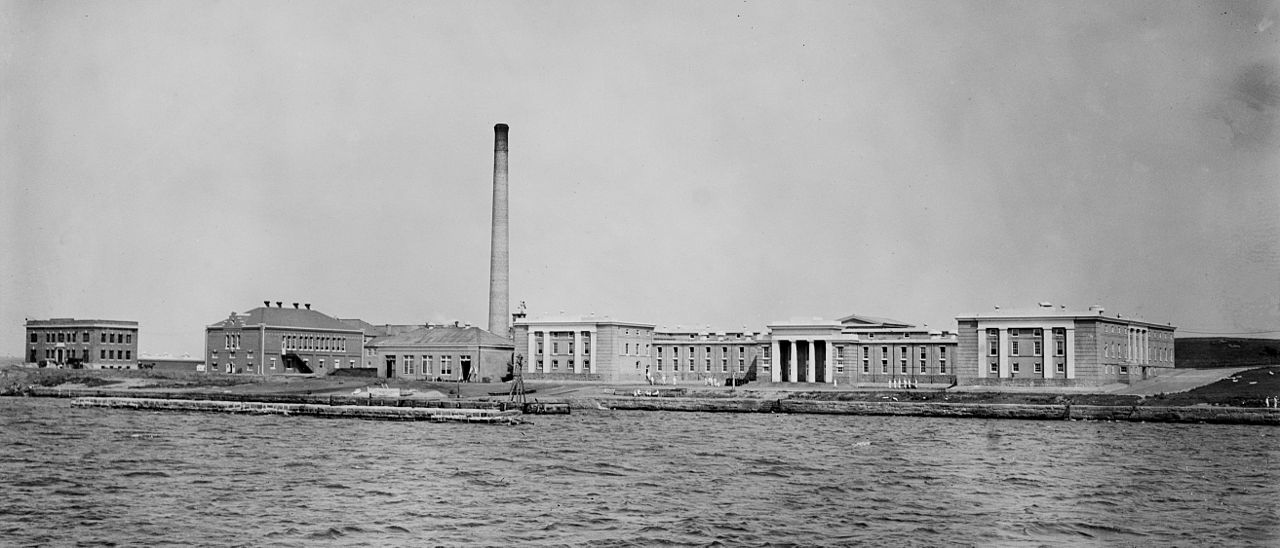
The Naval War College
But these early ships were in the traditional mold of the US Navy. While the technology in them might have been new, the strategic thinking behind them was that which the USN had embraced for its first century. The American navy would concentrate on protecting the US coast in concert with the Army and attacking enemy commerce. But the seeds of a different approach were laid in 1884, when the Naval War College was founded at Newport, Rhode Island thanks to the efforts of Commodore Stephen Luce. While the NWC's origins were primitive (it first was housed a donated poorhouse and there were only a few borrowed desks and no books) it gained a worldwide reputation thanks to the efforts of its second president, Alfred Thayer Mahan. Mahan, lacking any sort of textbook, developed a series of lectures that were published in 1890 as his seminal The Influence of Sea Power upon History. In it, he not only made the case for naval history as a distinct discipline, but he also articulated the importance of sea control as opposed to sea denial. Mahan's book was massively influential both at home and abroad, and it provided the intellectual groundwork for the US Navy to this day.2
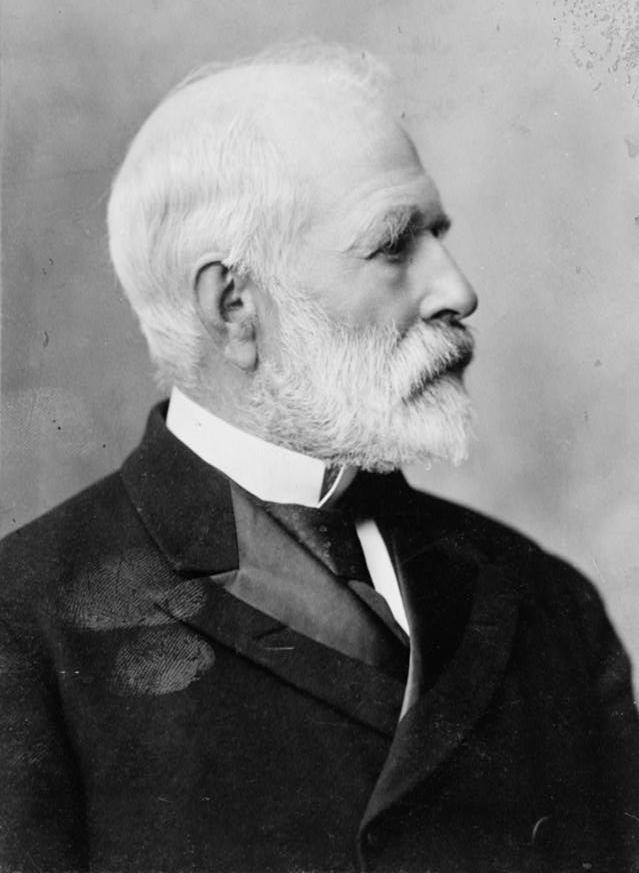
Benjamin Tracy
In 1889, newly-elected president Benjamin Harrison appointed Benjamin Tracy as Secretary of the Navy, and a year later, Tracy, influenced by Mahan, spearheaded the passage of a law authorizing three modern pre-dreadnought battleships, which became Indiana, Massachusetts and Oregon. Shortly before Harrison was defeated by his predecessor, Grover Cleveland, Tracy also pushed through a fourth ship, Iowa. In many ways, this appears to have been the tipping point. Even when the Democrats regained power, construction of the battlefleet continued, helped along by several war scares, most notably US intervention in the 1895 border dispute between Venezuela and Britain.
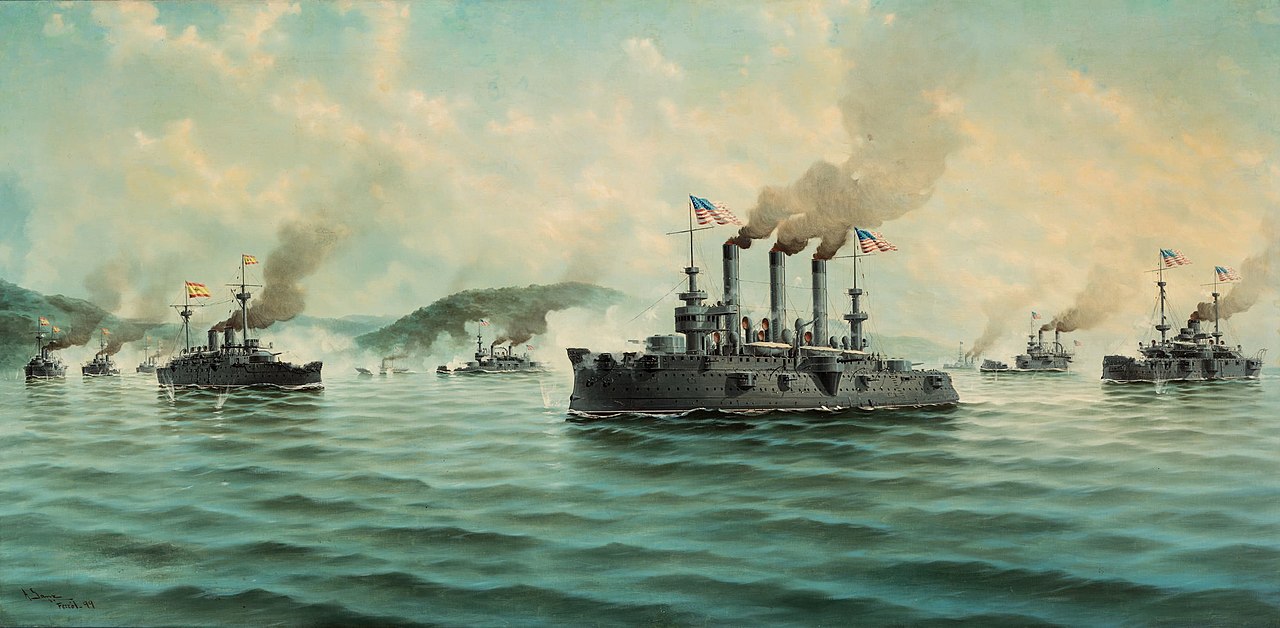
The US Fleet off Santiago
The new fleet's first real test came three years later, when a war scare turned into an actual war after the battleship Maine blew up in Havana Harbor. Despite the fact that only a handful of the new battleships had been completed, the new fleet performed very well in combat, ultimately destroying Spanish power in the Western Hemisphere. Spain ceded the Philippines and Puerto Rico to the US, giving America an overseas empire for the first time. Defending it would require more ships, which were promptly ordered.
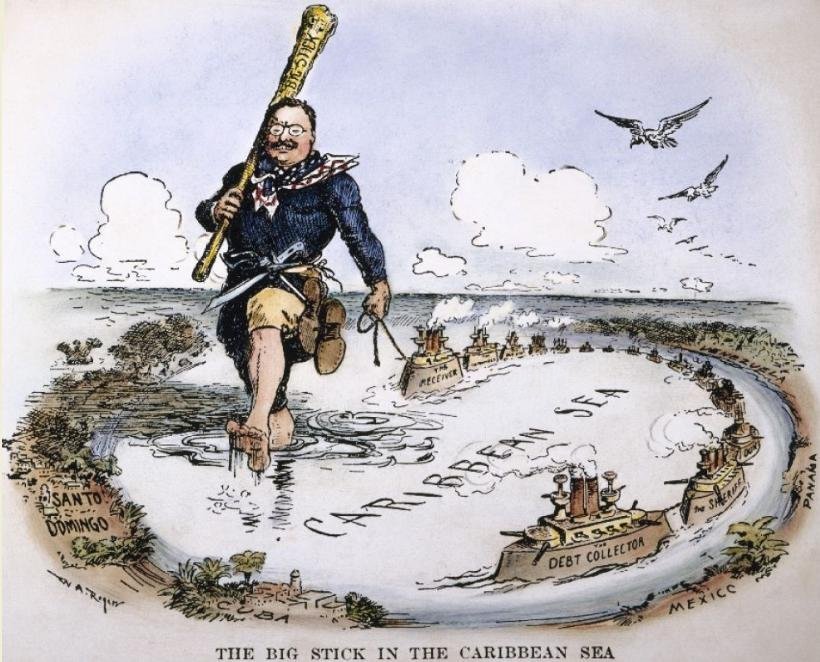
The war also brought to public prominence the man would would cement the USN's new form. Theodore Roosevelt had been fascinated by sea power since boyhood, and his first book, The Naval War of 1812, is still a standard work on the subject today. Roosevelt had been an early supporter of Mahan, and in 1896 was appointed Assistant Secretary of the Navy by William McKinley. In practice, the Secretary, John D. Long, was in poor health, and left most matters to Roosevelt, who vigorously advocated for further naval expansion. When war broke out, Roosevelt resigned to form the "Rough Riders", a volunteer cavalry unit that gained national headlines during the Battle of San Juan Hill. Roosevelt managed to make the most of this publicity, and quickly became Governor of New York, and then Vice President in 1900. When William McKinley was assassinated only 6 months into his term, Roosevelt was able to place his considerable energies behind further naval expansion and reform.
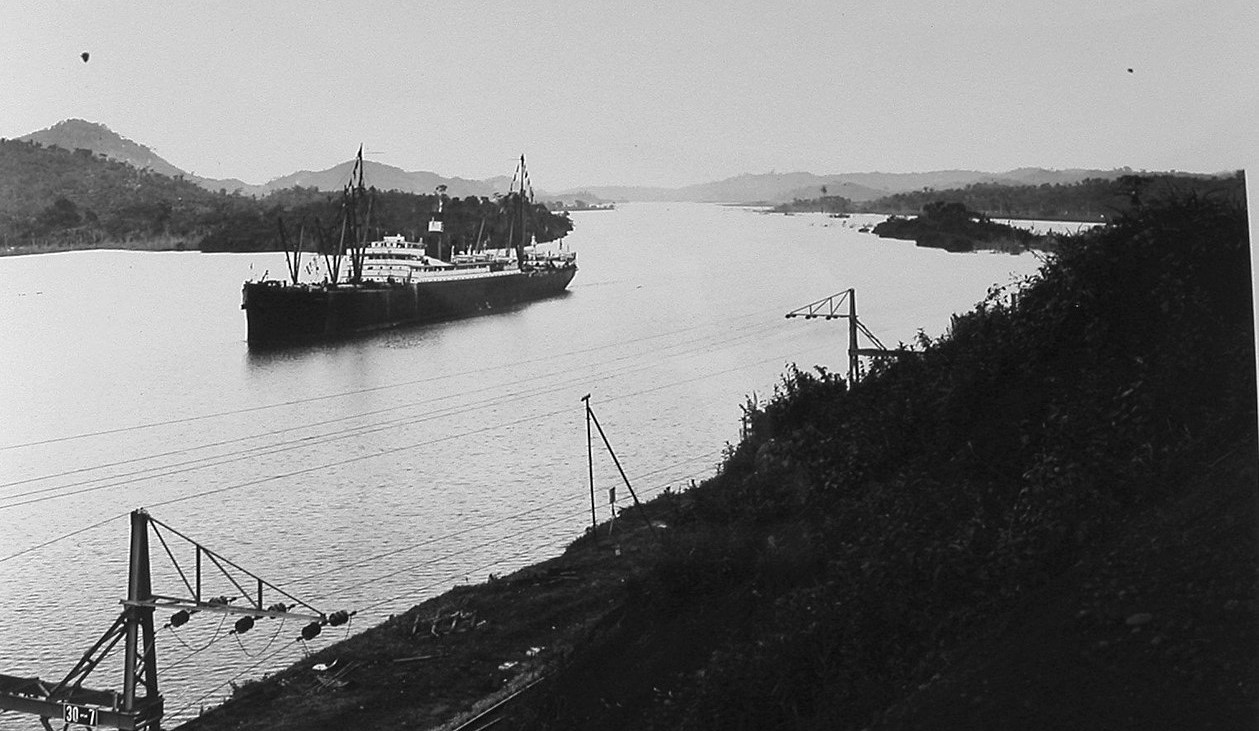
SS Ancon at the opening of the Panama Canal
Several of Roosevelt's actions stand out. First was his use of the fleet during another crisis in Venezuela, this one over that country defaulting on its debt. Roosevelt clarified that the Monroe Doctrine did not protect American states from fiscal mismanagement, but then turned against Germany, one of the powers in question, when it refused to accept the initial settlement. Germany backed down in the face of the USN's much larger fleet. The second was the laying of the groundwork for a canal to link the Pacific Ocean with the Caribbean Sea. The Panama Canal greatly eased the task of defending America's widely-separated coastlines and rendered unnecessary any repeat of Oregon's trip around South America.
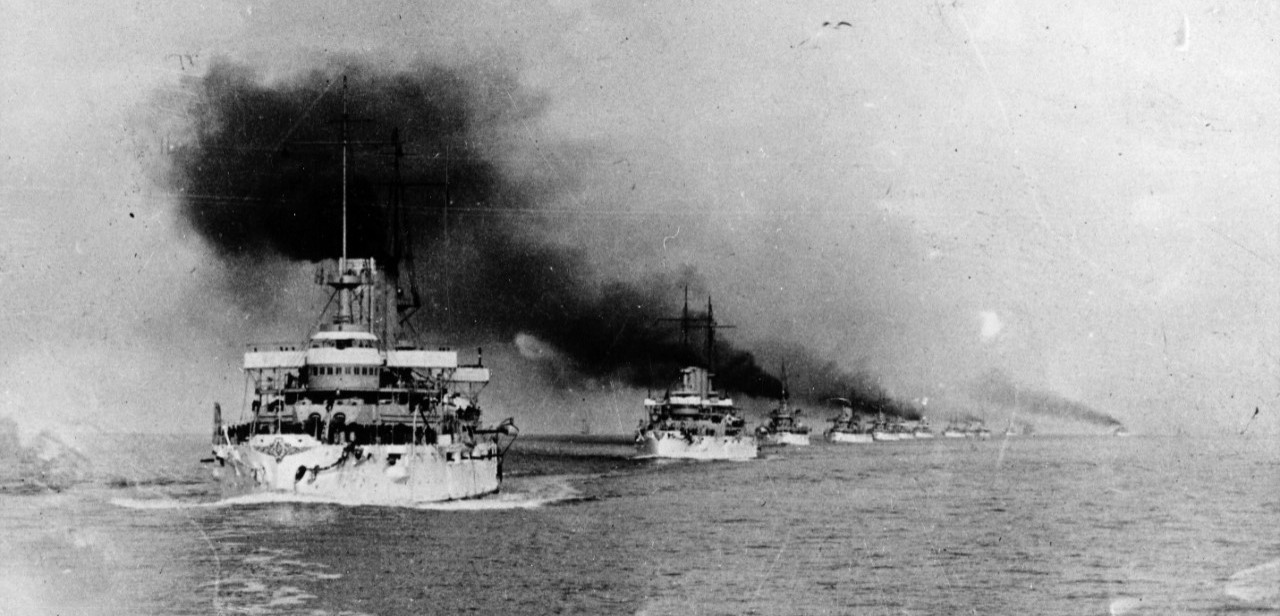
The Great White Fleet
Roosevelt's second term saw the end of the New Navy era. Several events took place that can serve as a marker. The most important was in Britain, not the US, where Dreadnought was laid down, setting a new direction in capital ships. At about the same time, Congressional willingness to spend on new warships began to slacken, and the USN fell behind in the new ships. But that wouldn't be felt for a few years, and the products of his earlier building programs were now in service. And Roosevelt used them to emphasize American naval might to the world, by send 16 ships, known as the Great White Fleet because of their color, around the globe. It was a diplomatic and operational triumph, and gave the USN valuable experience in long-range operations that would shape it to this day. By any standards, the Great White Fleet's return to Norfolk in 1909 marked the culmination of the US Navy's rebirth.
1 To be clear, there's not a great correlation between political party and support for naval expansion. Of the four great naval expansions during the New Navy era (1890s, 1910s, 1940s and 1980s) two were under Democratic presidents and two under Republicans. ⇑
2 For evidence of this, look at Secretary of Defense Esper's invocation of Mahan during his presentation on his 500-ship Navy. ⇑

Comments
Chester Alan Arthur.
Fascinating, though, to hear that T.R. was an actual naval historian. Yet another accomplishment to add to Amazonian exploration and cavalry-commanding....
Nice, ties together a bunch of previous US history posts, and fills in the post civil war gap.
The USN at the end of the Civil War was huge, but less effective than you might think - a substantial chunk of these ships were converted merchantmen which did yeoman work on the blockade, but would have been at an extreme disadvantage in combat on the high seas against an opponent like the UK or France. There were a number of cruisers in service that would have done very well, but as you point out, there was little or no money to maintain or crew them, and no incentive to change that.
Mike
@Goose of Doom
Fixed.
@echo
That was pretty much why I wrote this.
@Mike
Probably true. The Civil War-era USN has never been of much interest to me. My only post on it was the riverine warfare one, plus Suvorov's stuff.
@Goose: That was in Roosevelt's nerdy academic days, before he decided he needed to go West to toughen himself up. May have overdone that part a bit. But then, he overdid everything.
When the Royal Navy decided to publish an official multi-volume history in ~1900, every expert they consulted just told them to just ask Roosevelt if they could use his text. By the time it was published, they had to include a forward semi-apologizing for having the new President of Britain's enemy in that war write that chapter of their official history.
Teddy Roosevelt: Badass Historian. The winners don't write the history books, Teddy Roosevelt writes the history books and the winners say "Thank you for explaining to us how it really happened."
@John Schilling
This made my day.
We can disagree on many things amicably, but anyone who isn't in favor of bringing back the great white fleet paint scheme for the modern navy is bad and should feel bad.
Why?
@cassander
It's too hard to keep looking good in this day and age. Not enough manpower for the painting required.
@Anonymous
I'm not sure why they were barred from returning. Probably lobbying from those who hadn't left, or something of that nature.
Speaking of TR, I was reading a book on Panama and found an amusing quote by Ferdinand de Lesseps who knew them both. Something like, Kaiser Wilhelm is a lot like TR only more toned down.
@cassander
I am in favor, but only because it will make a clean canvas for the return to dazzle camouflage.